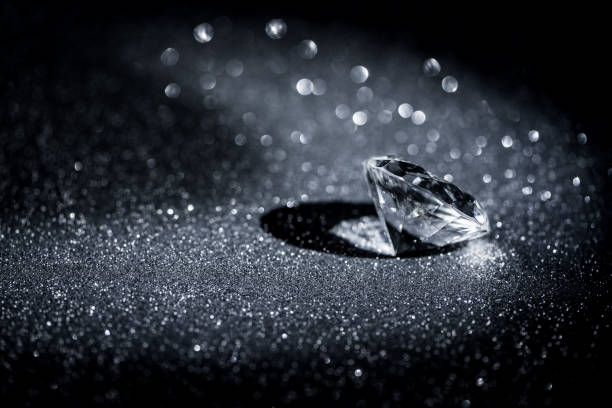When you hear the term “blood diamond,” what comes to mind? For many, it conjures images of conflict, suffering, and ethical dilemmas surrounding one of the world’s most coveted gemstones. But what exactly are blood diamonds, and why do they carry such a heavy weight? In this article, we’ll delve into the complex world of blood diamonds, exploring their origins, the human cost, and how we can make responsible choices when purchasing diamonds.
Understanding Blood Diamonds
Definition and Origins
Blood diamonds, also known as conflict diamonds, are precious stones mined in war zones and sold to finance armed conflict against governments. The term gained prominence in the 1990s, particularly during the civil wars in Sierra Leone and Angola, where rebel groups exploited diamond resources to fund their military operations. This trade has led to immense suffering, making the diamond trade a controversial topic.
How They Are Mined
The mining of blood diamond often takes place in dangerous conditions. Miners, including many vulnerable individuals, are forced to work under inhumane circumstances. They may be subject to violence, intimidation, and extreme exploitation. The mining process itself can also be perilous, with workers facing life-threatening hazards in unregulated environments what is a blood diamond.
The Human Cost of Blood Diamonds
Conflict and Exploitation
The human toll of blood diamonds is staggering. Rebel groups often use brutal tactics to control diamond-rich areas, leading to violence against local populations. Communities are torn apart as families are displaced, and lives are lost. The profits from these diamonds perpetuate cycles of violence and instability, making them a significant ethical concern for consumers.
Child Labor and Forced Labor
Tragically, many children are involved in diamond mining, often forced to work in hazardous conditions. These children are denied education and a chance for a better future. The exploitation doesn’t just affect the children; it undermines entire communities, keeping them trapped in a cycle of poverty and despair.
The Kimberley Process
What is the Kimberley Process?
In response to the blood diamond crisis, the Kimberley Process was established in 2003. This international certification scheme aims to prevent the trade of conflict diamonds by ensuring that diamonds sold are conflict-free. Participating countries must implement strict regulations and provide certificates verifying the source of their diamonds.
Effectiveness and Criticism
While the Kimberley Process has made strides in addressing the issue, it’s not without its flaws. Critics argue that enforcement is lax, and some diamonds still enter the market under the guise of being conflict-free. Moreover, the process has been criticized for not addressing the underlying issues of human rights abuses and exploitation in the diamond industry.
The Impact on Communities
Economic Consequences
The diamond trade can have devastating economic effects on local communities. While it can provide jobs, the benefits often do not trickle down to the workers. Instead, profits are siphoned off by corrupt officials and rebel groups. This leads to underdevelopment, further entrenching poverty in diamond-rich areas.
Social and Cultural Ramifications
The social fabric of communities can also be torn apart by the diamond trade. Families are displaced, and social structures are disrupted as conflict rages on. Cultural heritage can be lost, and communities are left struggling to rebuild after the violence subsides.
The Global Response
Legislation and Regulation
In addition to the Kimberley Process, various countries have enacted laws aimed at regulating the diamond trade. For example, some nations have banned the import of conflict diamonds outright. However, the effectiveness of these laws can vary, and enforcement remains a significant challenge.
Consumer Awareness and Activism
Consumer awareness is growing, and many individuals are now actively seeking ethical alternatives. Activist groups have worked tirelessly to shed light on the blood diamond issue, encouraging consumers to make informed choices. This growing demand for transparency is pushing the diamond industry to adopt more ethical practices.
Alternatives to Blood Diamonds
Ethical Diamonds
Ethical diamonds are sourced from mines that adhere to strict labor and environmental standards. These diamonds are often traceable back to their origins, providing consumers with peace of mind knowing their purchase supports fair labor practices.
Lab-Grown Diamonds
Lab-grown diamonds offer another alternative. Created using advanced technology that replicates natural diamond formation, these stones are chemically identical to mined diamonds but come without the ethical baggage. They also tend to be more affordable, making them an attractive option for conscientious consumers.
How to Make Responsible Choices
Tips for Ethical Jewelry Shopping
When shopping for diamonds or diamond jewelry, consider these tips to ensure you make responsible choices:
- Research the retailer: Look for jewelers who provide information about their sourcing practices.
- Ask for certifications: Request documents verifying that the diamonds are conflict-free.
- Consider alternatives: Explore ethical or lab-grown diamonds as viable options.
Questions to Ask Your Jeweler
Before making a purchase, don’t hesitate to ask your jeweler questions. Here are some key inquiries:
- Where do your diamonds come from?
- Are your diamonds certified as conflict-free?
- What practices do you have in place to ensure ethical sourcing?
Conclusion: The Future of Diamond Ethics
The Path Forward
As consumers become more informed and demand ethical options, the diamond industry is likely to evolve. Initiatives like the Kimberley Process and consumer activism play a crucial role in shaping a more responsible diamond market. However, ongoing vigilance is essential to ensure that progress continues.
Your Role in Change
By educating yourself and making responsible choices, you can contribute to the fight against blood lab created diamonds. Each purchase has the power to either support ethical practices or perpetuate suffering. Let’s strive to ensure that the diamonds we cherish are symbols of love and commitment, not conflict and despair. Together, we can help pave the way for a brighter, more ethical future in the diamond industry.




